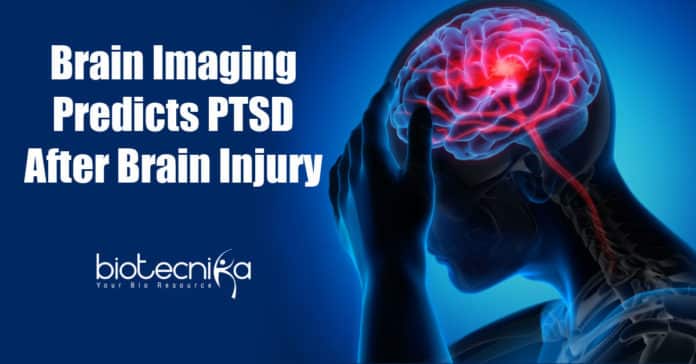Predicting PTSD after Brain injury using Brain imaging
Physical and/or psychological trauma can cause an intricate psychiatric disorder known as Posttraumatic stress disorder. Exactly how its symptoms (depression, cognitive disturbances, and anxiety) develop is poorly understood and unforeseeable. If experts could predict who would develop Posttraumatic stress disorder, therapies and results could be improved. Scientists have currently found potential brain biomarkers of post-traumatic stress disorder in individuals with traumatic brain injury utilizing MRI.
Prof. Murray Stein, Department of Psychiatry, and Family Medicine and Public Health, University of California, San Diego, and the lead author of the study commented that the association between TBI and PTSD had earned a lot of recognition lately as researches have revealed significant overlap in risk variables and symptoms. The team used data from TRACK-traumatic brain injury, a big longitudinal study of people in the Emergency Dept with traumatic brain injury’s serious enough to require CT scans.
The team tracked more than 400 such TBI patients, examining them for posttraumatic stress disorder at 3 and 6 months after brain injury.
18% (77 patients) at 3 months and 16% (70 patients) at 6 months had posttraumatic stress disorder. After the injury, all the patients underwent brain imaging.
Dr. Stein stated that the volumes of vital structures in the brain thought to be associated with PTSD was determined using MRI studies conducted within 2 weeks of injury. They observed that the volume of many of these structures predicted posttraumatic stress disorder 3-months post-injury.
Posttraumatic stress disorder was predicted at 3 months, especially in the regions – insula, cingulate cortex, and the superior frontal cortex. These regions are related to emotional regulation, attention, and arousal. However, posttraumatic stress disorder was not predicted at 6 months in structural imaging.
The conclusions match with earlier studies revealing smaller volumes in numerous brain regions in patients with posttraumatic stress disorder and research implying that the decreased cortical volume might be a risk element for developing posttraumatic stress disorder. Some resilience against PTSD can be provided with “brain reserve” or increased cortical volumes.
He stated that the biomarker of brain volume differences is not yet strong adequate to offer medical help. However, it opens the door for future research to look a lot more intimately at how these brain areas may contribute to (or shield against) mental illness like posttraumatic stress disorder.
Cameron Carter, MD, Editor of Biological Psychiatry: Cognitive Neuroscience and Neuroimaging (in which the research is published), stated that the study utilizes MRI to track a move ahead to understand why some individuals develop posttraumatic stress disorder after trauma while some don’t. It likewise prepares for future research focused on utilizing brain imaging to assist predict that an individual is at higher risk and might take advantage of targeted interventions to minimize the medical impact of a traumatic incident.
Predicting PTSD after Brain injury using Brain imaging






